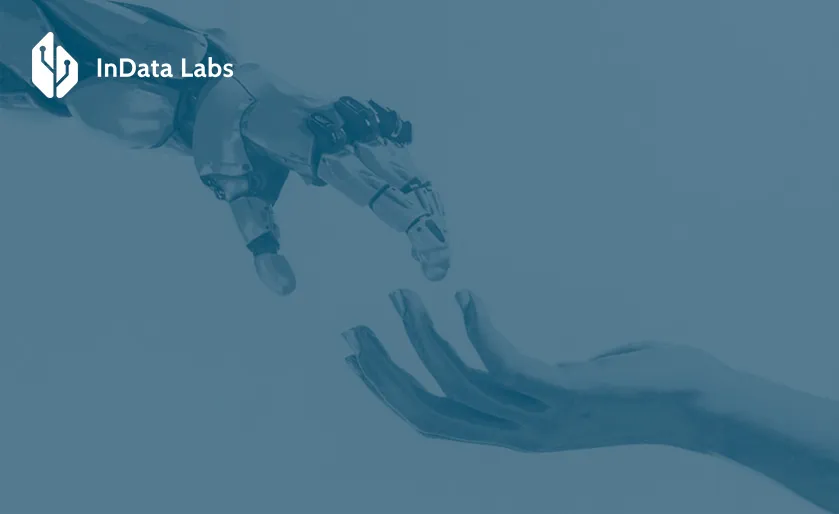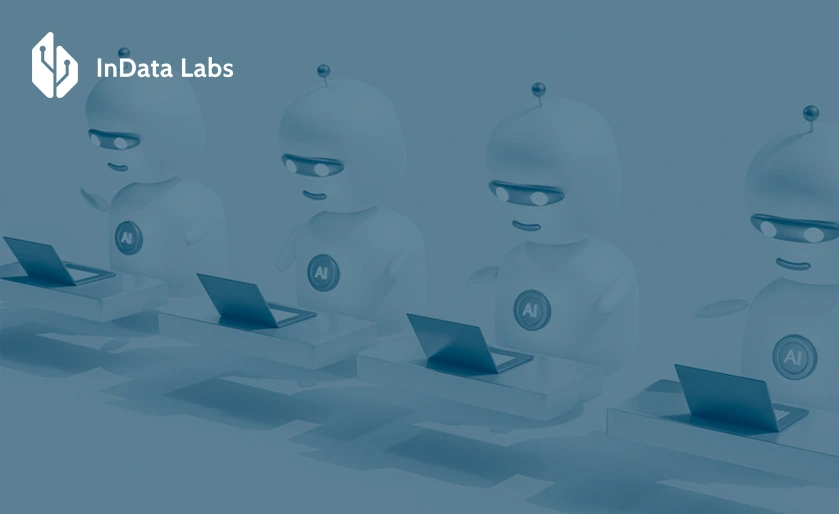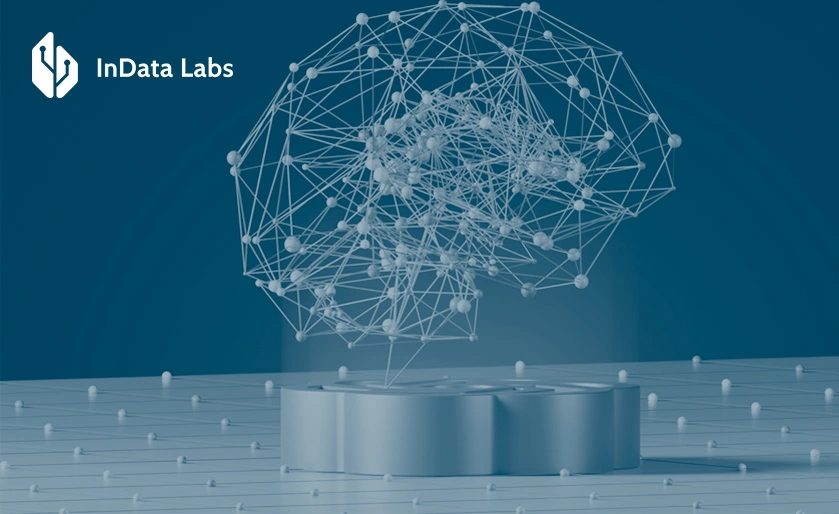The modern tech-savvy generation is accustomed to the emergence and adoption of new technologies. From the latest smartphones to electric cars and apps for everything, they see technologies come and go every day.
However, no other technology has impacted society more than artificial intelligence in the last decade or more. On paper, AI is mainly a tool or solution that allows humans to automate tasks, processes, and functions. However, if you look below the tip of the AI iceberg, you’ll quickly see how the leading Industry 4.0 technology is transforming the world.
In this artificial intelligence guide, you’ll find valuable insights into every aspect of the technology, from its history to today’s AI app development to applications and prospects for various industries. Simply put, if you want to see how artificial intelligence is changing the world, then you’re in the right place.
What is AI technology?
The term “artificial intelligence” refers to an ever-evolving technology that uses software or machines to simulate human intelligence to perform complex, simple tasks. The reality is AI has been studied in the United States and globally since the early 1950s as an emerging computer science field.
The earliest research on AI mainly focused on developing computers that can mimic human cognitive processes using algorithms and logic-based symbolic reasoning. It wasn’t long before the AI industry celebrated its first milestone. In 1956, the world’s first AI conference took place after eight weeks of brainstorming sessions at Dartmouth College in Hanover, New Hampshire.
The Dartmouth conferences set the foundation for AI research over the next two decades, with the introduction of natural language processing, computer vision, and other technologies. Unfortunately, progress slowed down in the late ‘80s due to diminishing interest and limited government funding.
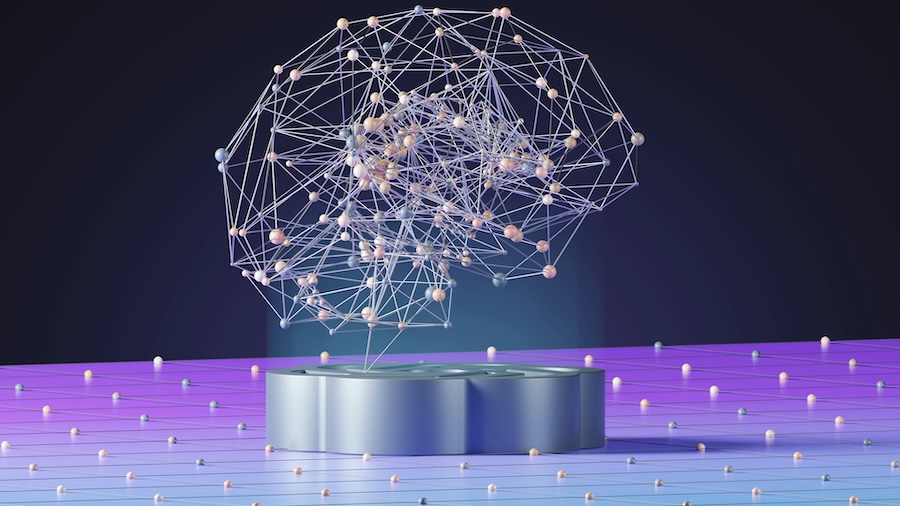
Source: Unsplash
However, the technology gained a resurgence in the late ‘90s following the internet revolution and the emergence of advanced computing technologies. Since then, artificial intelligence development has grown exponentially, with rapid adoption in almost every mainstream industry.
The main purpose of AI today is to increase human productivity and productivity through intelligence upon the execution of certain substantial services. AI systems use machine learning algorithms and advanced computing techniques to analyze data, recognize patterns, make decisions, and intervene in changing situations.
By using machine learning, neural networks, and natural language, they can process more information in less time than humans (almost in real-time), have learned something from past experiences, and constantly improve without explicit planning.
Today, technology and human intelligence integrate effectively to increase productivity and facilitate faster and more accurate decision-making across domains.
Types of artificial intelligence
Now that you have an idea of what artificial intelligence is, it’s time to peek below the iceberg. However, you should know that even though the technology has evolved way beyond infancy, there’s a long way to go before humans can tap into its full potential. So, the initial part of this artificial guide will explain the two parent types of AI and their subcategories.
- Capability-based artificial intelligence;
- Functionality-based artificial intelligence.
Capability-based AI
Capability-based AI is any AI-enhanced software that can perform specific tasks or functions with high proficiency and efficiency. Unlike artificial general intelligence (AGI), which aims to replicate human intelligence across various domains, it excels in a particular area or application. These systems are typically optimized to possess specialized capabilities, such as natural language processing, computer vision, speech recognition, or data analysis. By focusing on specific functions, they can deliver targeted solutions tailored to the needs of specific industries, use cases, or user requirements.
Here are the most common types of capability-based AI:
- Narrow AI: Narrow AI is the most popular capability-based AI. Also called Weak AI executes simple tasks or specific actions since it possesses no cognitive capability and can’t learn anything beyond its programming. Common examples include image recognition software and virtual assistants
- Artificial General Intelligence (AGI): AGI is a more powerful AI variant of Narrow AI. It can learn, think, and perform complex cognitive functions faster than humans. However, real-world solutions for this AI are currently in development and will integrate other 4IR technologies like quantum hardware and supercomputers;
- Artificial Superintelligence: Artificial Superintelligence (ASI) is a theoretical AI model capable of learning at learning at speeds beyond human capabilities. The technology is currently in development and will focus on self-aware robots. So far, any progress made in this space remains a speculation. However, Dave Rogenmoser, the CEO of Jasper, openly spoke about ASI app development and claimed it would surpass human intelligence by a mile.
Functionality-based AI
In contrast, functionality-based AI focuses on processing massive amounts of data by interacting with different environments. Here are the four major types:
- Reactive Machine AI: Reactive machine AI responds to prompts and immediate tasks without storing data. In other words, they can’t learn from past experiences. Secondly, they respond to limited input combinations. As a result, they are used in systems that require human intervention and offer basic functionality, such as gaming, streaming recommendations, assembly line operations, and traffic management.
- Limited Memory AI: Limited memory AI is a more powerful variant of reactive machine AI. It can store data and use it to make forecasts. Additionally, it can perform tasks using short-term knowledge using deep learning, a process that replicates the function of neurons in the human brain to learn from experiences and improve accordingly. One of the core applications is self-driving cars, especially those in research and development. Chatbots and virtual assistants adopt the same technology to mimic human interactions and remember important details;
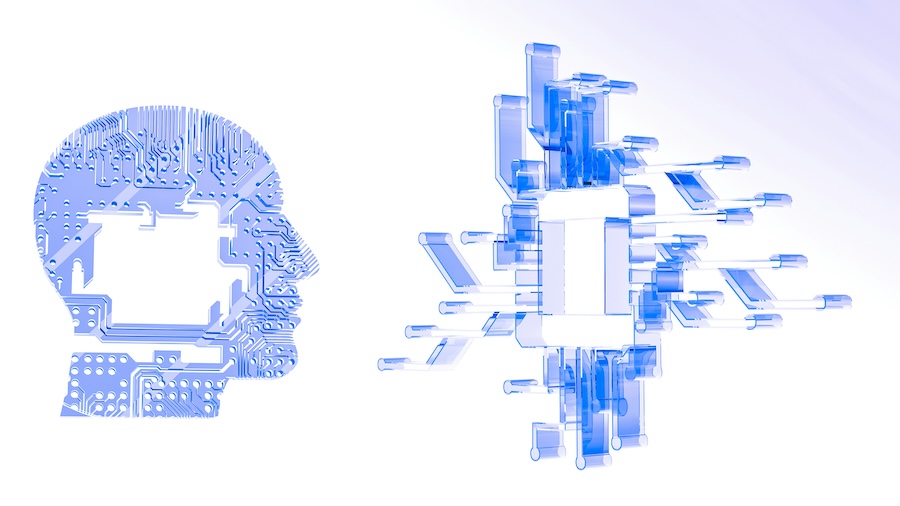
Source: Unsplash
- Theory of Mind AI: Theory of mind AI is a proposed theoretical model that could eliminate the biggest shortcoming of artificial intelligence – understanding emotions. Psychology describes the ability to perceive, predict, alter, and control human emotions as emotional intelligence. In the industry, achieving this functionality is considered the next big thing in artificial intelligence software development:
- Self-aware AI: Self-aware AI is an intriguing concept that aims to build a machine or software capable of reaching the point of singularity. In other words, this AI could go beyond the theory of mind and unleash a new consciousness into the digital and physical world that exceeds human-level intelligence.
How is AI useful in daily life?
Today, AI is all around you at home and work. You can find it in virtual assistants like Siri and Alexa, self-driving cars, Netflix, and other places.
Thanks to decades of research and innovation, it has become an integral part of our professional and personal lives, shaping how we work, communicate, and interact with the world around us.
Here are the most common applications you probably know about:
- Google Maps: Google Maps is arguably the most popular daily-life AI application. The app uses AI and geo-location technology to track your live location and use it to recommend routes to your destination. However, it doesn’t stop there. It also monitors traffic flow, estimates time to destination, and uses speech recognition technology to guide drivers and simplify navigation;
- Smart assistants: If you own a computer or smart device powered by Windows, iOS, Android, or other operating systems, you’re no stranger to Siri, Google Assistant, or Alexa. These assistants perform basic tasks, such as setting reminders, searching for products or services online, and even controlling smart devices like Apple HomeKit gadgets (security cameras, AC thermostats, lights, etc.);
- ChatGPT: In December 2022, OpenAI launched ChatGPT, a powerful AI chatbot that allows you to enter prompts to create content, from articles to programming codes and emails. Simply put, you give it a command, and it leverages stored data and a large language model to emulate human writing. For instance, if you work in IT security, you can create how-to guides and articles on popular topics like What Can Someone Do With Your IP? The popularity of ChatGPT has given chatbot development providers the license to launch similar AI solutions that help users with specific tasks;
- Wearables: Today, you can find hundreds of AI-enhanced wearables, from smart glasses to smart clothing, biosensors, and smart patches. However, nothing beats smartwatches in terms of functionality and portability. For instance, the Apple Smart Watch allows you to sync your smartphone data into your watch and offers various AI-powered features like heart rate monitoring, fall detection, cardio tracking, and more. According to Statista, the company sold over 150 million units in 2023;

Source: Unsplash
- Snapchat filters: Snapchat is a popular social media platform for sharing short-form video content and images. The app offers filters powered by machine learning models that focus on the image’s or video’s subject while tracking facial movements, allowing you to integrate color effects, feature bitmojis, change your face, and more;
- Self-driving cars: In the last decade, there’s been a massive shift in the automobile industry. Self-driving cars like the 2023 Tesla Model S, Cadillac Escalade, BMW X5, and Audi A8 are quickly revolutionizing how we commute from A to B. These innovative vehicles use a combination of sensors, cameras, and sophisticated algorithms to perceive their surroundings, interpret data in real time, and make decisions to navigate roads autonomously;

Source: Unsplash
- Netflix: Popular streaming platforms like Netflix utilize AI to enhance user experience and content recommendations. It analyzes user viewing habits, preferences, and interactions with content to suggest personalized recommendations, curate tailored content categories, and optimize the platform’s user interface. Moreover, AI helps Netflix optimize video streaming quality, predict network demand, and improve content delivery efficiency for seamless viewing experiences.
How AI transforming the world we live in
AI has changed how we work and live. It’s everywhere, from healthcare to finance, retail, and energy. The rapid adoption of AI-enhanced solutions, including software and machines, has redefined job roles, performance metrics, operational efficiency, and skillsets.
The unprecedented industrial shift
In the last decade, artificial intelligence has integrated into various industries, including:
- Healthcare: AI is making a huge difference in healthcare. It works with machines and software used for diagnosis, record-keeping, security, and surgeries, helping doctors and nurses do their jobs faster and easier, like looking at X-rays and suggesting treatment;
- Finance: AI is also used a lot in finance. It helps with things like spotting fraud, checking who can get a loan, and talking to customers. In essence, you can automate any recurring process to improve efficiency and reduce overheads;
- Retail: Ever noticed how some online stores seem to know what you want to buy? That’s AI at work. It looks at what you’ve done before and guesses what you might like. From clothes to groceries and everything in between, it leverages machine learning algorithms to anticipate needs;
- Transportation: Self-driving cars are becoming more common thanks to AI. They can drive without much help, find the best routes to avoid traffic, and even know when they need maintenance;
- Manufacturing: Factories use AI to predict when machines might break and to make sure products are made right. This helps them run smoothly and manage everything better to ensure products meet quality standards;
- Education: In schools, AI helps teachers with grading, making lesson plans, and giving extra help to students who need it;
- Agriculture: Farmers use AI to check on their crops, figure out how much food they’ll get, and stop pests from ruining their plants;
- Marketing: Companies use AI to show ads to people who might like their products, see what people say about them online, and figure out the best ways to sell things;
- Energy: AI helps manage electricity grids, predict when power plants need fixing, and make solar panels and wind turbines work better.
Multiple factors drive this massive shift in various industries. However, the three biggest contributors are:
- Advanced algorithms: Advanced algorithms are the building blocks of AI technology. They enable computers to learn from data, identify patterns, and autonomously make decisions. These critical functions help the technology drive dozens of AI applications for businesses and individuals, such as speech recognition, recommendation systems, self-driving cars, and medical diagnosis tools.
- Advanced computing devices: The evolution of computing devices, including powerful processors, GPUs (Graphics Processing Units), and specialized hardware like TPUs (Tensor Processing Units), has enabled businesses to process complex algorithms and handle massive amounts of data in real-time. These advanced computing devices provide the power needed to run sophisticated AI algorithms efficiently. In other words, they fuel large-scale natural language processing, image recognition, and predictive analytics;
- Exponential growth of data: With the advancement of digital technologies and interconnected devices, the volume of data generated worldwide has grown exponentially. Today, you can find different types of data, including structured, unstructured, and semi-structured. All serve as fuel for AI algorithms, enabling deep learning from patterns, extracting insights, and making intelligent decisions.
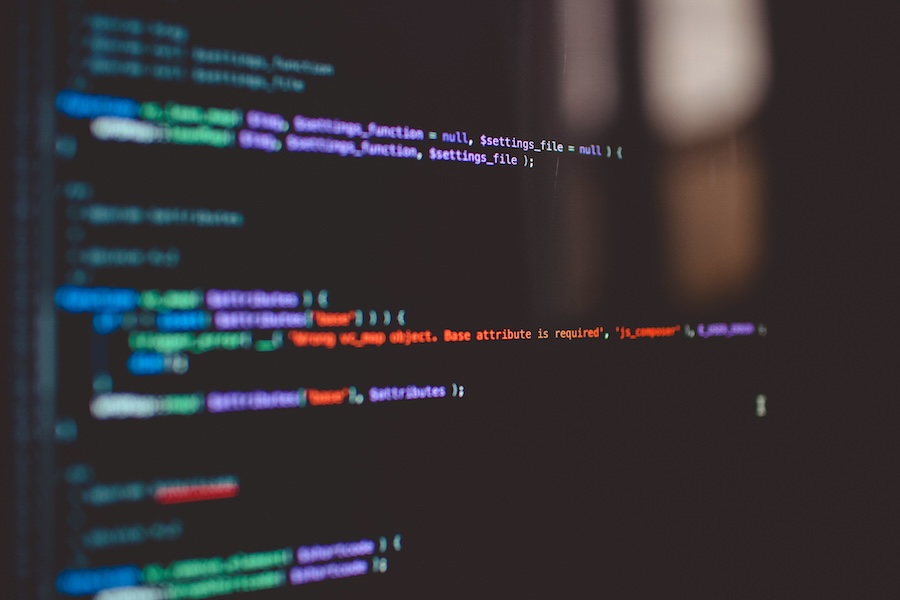
Source: Unsplash
Impact beyond automation
The impact of artificial intelligence extends beyond automation. The 4IR technology has also revolutionized how you work by enhancing human capabilities and transforming decision-making.
Today, AI systems work alongside people to improve speed and ingenuity. With AI software and computers analyzing vast amounts of data, you can make smarter decisions and find valuable patterns they couldn’t see before.
Here’s how:
- Data analysis empowerment: AI revolutionizes productivity by analyzing extensive data sets, unveiling valuable insights, and identifying patterns that were once hidden. As a result, it enables informed decision-making and strategic planning;
- Workflow optimization: AI-powered assistants streamline tasks, organize workflows, and facilitate access to relevant information, empowering individuals to focus on creativity and innovation in their work;
- Collaborative knowledge sharing: AI facilitates seamless information retrieval and sharing within organizations, fostering collaboration, enhancing problem-solving capabilities, and driving collective intelligence and innovation.
How AI is transforming the world of work with new skills and roles
AI transforming the world is no longer the stuff of science fiction movies and cartoons. The technology’s integration into workplaces has indeed revolutionized the skills required for various job roles:
- New roles: The adoption of AI has and will continue to introduce new professional roles in every industry. From AI developers to data analysts, machinery operators, etc., you can expect a massive influx of fresh talent specializing in different aspects of artificial intelligence development, integration, and usage;
- Analytical proficiency: Data analysis has become crucial in the AI-driven workplace. With AI systems generating vast amounts of data, employees must interpret this information effectively. Analytical skills involve understanding numerical data to identify trends, patterns, and correlations within datasets.

Source: Unsplash
- Creative thinking: While AI excels at processing and analyzing data, it often lacks the creativity and innovation inherent in human brain thinking. As such, creative thinking has become increasingly valued in the workplace. Employees who can think outside the box, generate innovative ideas, and devise novel solutions to complex problems are highly sought after;
- Interpersonal skills: Despite the advancements in AI technology, human interaction remains essential in many professional contexts. Interpersonal skills, including empathy, effective communication, and relationship-building, foster collaboration, resolve conflicts, and cultivate positive work environments. Employees who empathize with others, communicate clearly and persuasively, and establish meaningful connections are invaluable assets to organizations.
Augmentation of human capabilities
One of the most significant benefits of artificial intelligence software development and adoption is streamlined processes and reduced human error. However, one benefit you might not know is its potential for augmenting human capabilities instead of replacing the dominant workforce. AI technology allows humans and machines to work collaboratively, helping them overcome each other’s weaknesses.
Let’s explore further:
- Human-computer collaboration: Collaborative AI technologies and solutions like customer service chatbots, intelligent assistants, and cobots leverage your strengths (intuition, problem-solving, creativity, etc.) and combine them with the strength of machines (automation, data processing, scalability, etc.) to establish a harmonious symbiotic relationship that improves productivity, efficiency, and outcomes;
- Algorithmic decision-making: AI algorithms analyze vast amounts of data to provide actionable insights through patterns. As a result, you can make quicker, more informed decisions to thrive in your target market and industry. For instance, you can easily predict consumer behavior based on market trends using data analytics. AI algorithms can analyze and streamline the day while you can cherry-pick the most relevant information you need;
- Efficiency and productivity enhancement: Along with improved decision-making and collaboration, artificial intelligence (AI) can take your productivity and efficiency to the next level by eliminating redundant or repetitive tasks like schedule management, data entry, and administration.
Why do we need AI in our lives?
Humans actively seek tools and solutions to make their lives easier. AI’s ability to automate or simplify various tasks can help you do things faster with significantly less effort. You can quickly analyze data, find patterns, and make better decisions. Whether you’re writing a blog, managing schedules, or looking for directions, you can achieve better outcomes.
Here’s how:
- Augmenting human intelligence: AI supports your intelligence by analyzing extensive data, detecting patterns, and providing valuable insights to enhance your decision-making. With AI-powered tools, you can make more informed choices, optimize strategies, and achieve better outcomes;
- Fulfilling curiosity and exploration: Humans love to explore and learn new things. AI technology lets us explore places like space and the deep sea or understand how our brains work. Scientists use AI to run simulations, analyze data, and discover new things that help us learn more about the world;
- Adapting to technological evolution: Humans have always adapted to new technology. AI is the latest in a long line of advancements, helping us grow and change in a fast-paced digital world. By using AI for automation, improvement, and new ideas, people and industries can keep up, stay competitive, and succeed in the modern age;
- Catalyzing social connectivity: Humans are social creatures who like to connect and work together. AI platforms and social networks make it easier for people worldwide to talk, share ideas, and build communities. These AI tools help people connect, collaborate, and form relationships no matter where they are;

Source: Unsplash
- Driving sustainable development: As we become more aware of environmental issues and the need for conservation, AI steps in as a powerful ally. With its help, you can tackle climate change, manage resources wisely, and build a more sustainable world. From reducing energy waste to protecting endangered species, AI-driven innovations are driving the world towards a brighter, greener future. So, the next time you recycle or turn off the lights, know AI is right there, helping to save the planet, one byte at a time.
Since the Industrial Revolution, humanity has been advancing steadily, seeking innovations to improve efficiency and quality of life. Humans have adapted and prospered with each technological leap, from steam power to digitalization. Now, Artificial Intelligence (AI) represents the next step in this journey, offering immense potential to enhance productivity, drive innovation, and tackle complex global challenges.
The role of Generative AI in various fields
Generative AI is a type of AI that creates new data, like images or text, similar to what it’s been trained on. It uses models such as GANs or VAEs to generate realistic output. It’s used for applications like creating images and writing text. Generative AI is a significant driver behind the widespread adoption of AI in various sectors. Its ability to create realistic images, coherent text, and audio has revolutionized industries like design, healthcare, and manufacturing with the launch of several commercialized solutions, including (but not limited to):
- Text Generation: Open AI’s GPT-3, Copy.ai, Google Translate, DeepL, Github Copilot, etc.:
- Image Recognition and Design: NVIDIA’s StyleGan, DALL-E, RunwayML, DeepArt, etc.;
- Artificial Intelligence Software Development Assistants and Tools: AutoDesk, Ansys Discovery, Siemens NX Generative Design, etc.:
- Medical Image Analysis: Aidoc and Zebra Medical Vision for X-rays, CT Scans, and MRIs.
The introduction of these solutions, alongside others, has sparked a significant global transformation in how businesses undertake product development and design.

How will artificial intelligence change the world?
There’s a reason AI is regarded as the king of Industry 4.0 technologies. In less than a decade, it has reshaped almost every industry in sight with new solutions, job roles, and processes. Life has become more accessible and safer with artificial intelligence working behind the scenes to improve your daily experiences at home, work, and on the road. From assistants like Siri to AI alarm systems and industrial machines, everyone can benefit from robust, innovative solutions continuously entering the market.
So, how will the development of artificial intelligence change the world? It’s simple. It will make the future brighter, but not without a few changes. With this simple guide to artificial intelligence development, you can navigate the evolving landscape of technology with confidence and insight, unlocking its full potential to empower individuals and societies. However, don’t stop there. Consult with experts in the industry to ensure a smoother transition when adopting AI solutions at home or work.

